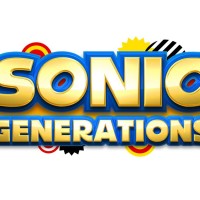Game: “Sonic Generations”
Berserk Boy
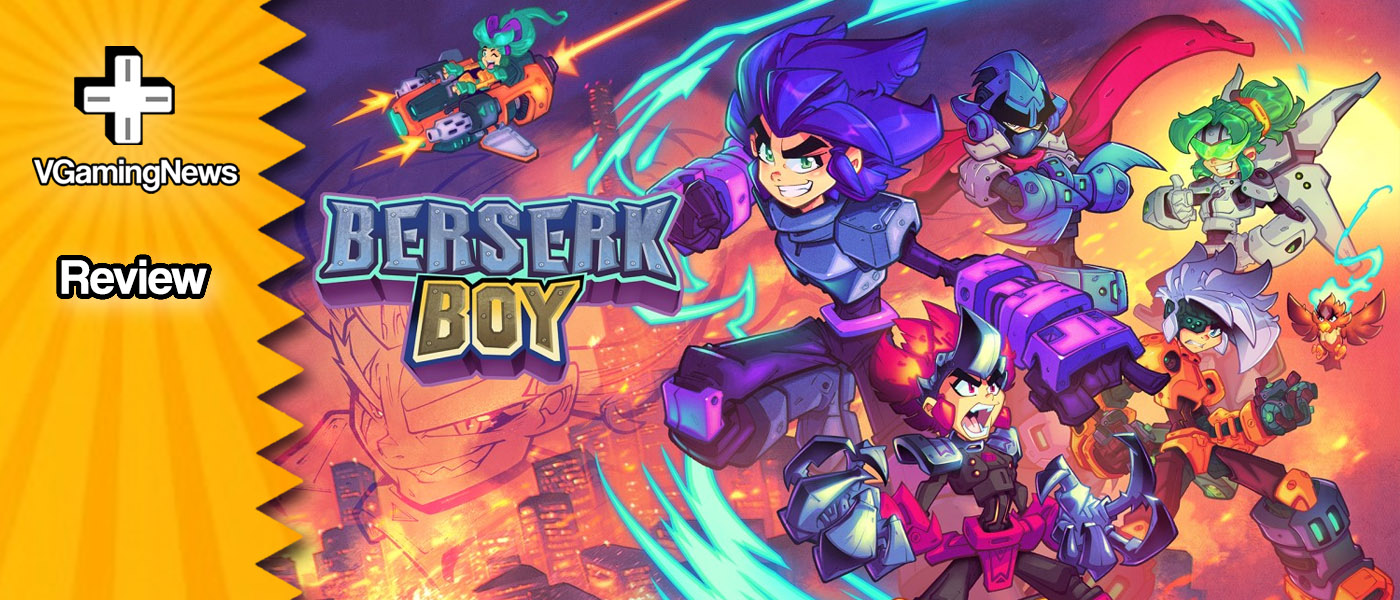

In a month where I celebrated my 40th birthday, I’ve been looking back over a lot of things, including video games. It’s strange to think that I’ve now been wielding a controller for probably three-quarters of my life, and how many of my favourite gaming experiences are still of those games I played almost 30 years ago. So as a gamer ‘of a certain age’, pixel art platformer Berserk Boy immediately appealed to my sense of nostalgia, sporting a gorgeous look that’s clearly inspired by some of the greats of my heyday. Without a moment to spare, I snatched up my pro controller – it was time to go berserk!
Berserk Boy takes place in the year 21XX, in a world where the powers of darkness have risen up and humans live under constant threat of their attacks. Helping fight back against the forces of evil are the Resistance, a military force who fight off the Shades and offer aid to the remaining human populace. Our protagonist is Kei, a young boy recently enrolled in the Resistance, who becomes embroiled in a battle to gather the long-lost Berserk Orbs -mythical artefacts of great power- from a maniacal scientist known as Dr Genos. As Kei, you’ll quickly find and merge with a Berserk Orb, granting you the power of lightning speed and the ability to control electricity! By using these powers you’ll have to battle your way through an army of Shades, overcome Dr Genos’ henchmen and collect their Berserk Orbs, so that you can grant Kei more elemental powers to help him take on the power-mad doctor himself.
At A Glance
| BERSERK BOY | |
| Positives | + Pulsing soundtrack highlights the action + Bright and playful pixel art visuals + Loads of optional pickups to extend the fun |
| Negatives | – Collection of control niggles – Later abilities begin to overpower the level design – Weak final act |
| Overall | 7 /10 |
| Played On | Nintendo Switch |
| Also Available On | PC |
| Find out about our scoring policy here. | |
At first glance, Berserk Boy may look like an old school run ‘n’ gun affair, but it actually plays a lot more like a Sonic-style platformer, where fast-paced jump and dash attacks are the order of the day. Levels are set out in large blocky pathways that are littered with spikes, pitfalls and blasters to hamper your progress. A la Sonic Adventure 2, enemies are strategically placed to invite you to dash attack multiple baddies in a row, and along with the handy grind rails, you’re able to traverse great chunks of the level without your feet ever touching the ground. It’s a simple but effective formula, and the pace at which you can zoom around the levels is an awful lot of fun. You can play Berserk Boy on one of two difficulty levels, Modern and Retro; the Modern options gives you an unlimited number of chances to reach the end of a level, where the Retro mode takes a more traditional lives-based approach whilst also making the enemies a little bit tougher. I played in the game Modern as that seemed to be the default option, but I’d recommend Retro for players with any platformer experience, as Berserk Boy never risks reaching anything close to Mega Man difficulty levels.
Each level contains a number of human survivors who are hidden throughout, and as a Teleporter working for the Resistance, Kei must find them and get them to safety. Finding all of the Resistance members in each level unlocks an Ex. Level – these are time trials where it’s a race to reach the finish -but be warned- there are no checkpoints, so tread carefully or you’ll have to start again from the very beginning! Also stashed throughout each level are five Berserk Medals; often tucked away in the most tricky to find or hard to reach areas, you’ll need to search high and low to collect a bunch of these if you want to overcome Dr Genos and save the world.
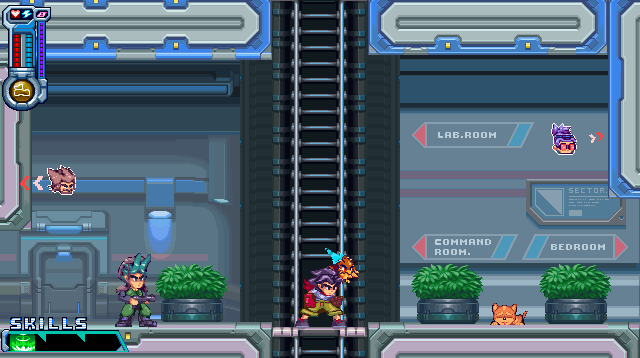
In the standard Berserk form, Kei’s basic attack allows you to smash into an enemy at high speed; this not only causes damage but charges them electricity as well – then with one simple push of a button, you can unleash a blast of power to any (and all!) baddies you’ve tagged with a powerful shock attack! Each of the five Berserk Orbs you collect come with their own skills and signature attacks, and you can swiftly switch between them at will with a flick of the right analogue stick. And since the action freezes while you’re on the form selection wheel, you’re able to select the right power without any stress before getting back to zooming around in your preferred form.
Being picky, as I am, the controls can sometimes get a little bit in the way of the fun – particularly when it comes to the accuracy of inputs with the analogue sticks. This was especially true when using the multiple dash ability in ice form, and I felt like I never had great control of Kei as I attempted to speed between large numbers of targets. The right analogue stick is the main perpetrator though, and I found myself being given the wrong form from the selection wheel pretty regularly, particularly when I was in a hurry to switch. It seemed that pushing the stick in one direction would sometimes cause the game to select the opposite side when the stick ‘flicked back’ into place. This might not sound like an especially egregious issue, but when you’re trying to speed your way through a level and find yourself without the power you’re expecting, you can plummet to your doom which is really quite annoying.
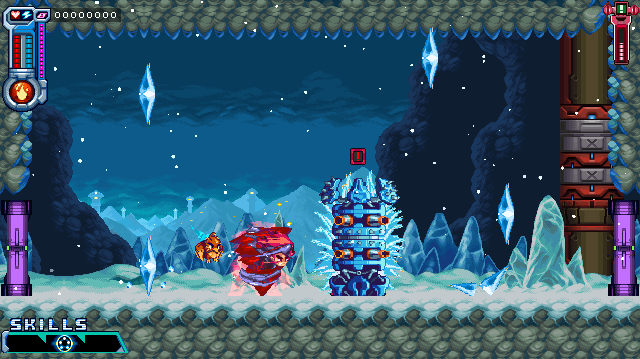
The default button mapping on the Switch felt really foreign too, and I imagine this comes from cutting and pasting the control scheme directly from the PC version, where Xbox button layouts are the default. And yes, while you can remap the controls easily enough, this too comes with a problem – half of the onscreen prompts use the remapped controls and half of them don’t! This caused considerable confusion whenever I was trying to figure out what I needed to press, I was regularly second-guessing the prompts. Thankfully, all of this is very patchable, and I’m sure Berserk Boy Games will work out these kinks in no time.
Visually, however, things are top notch. With its retro-inspired HUD, chunky character sprites, and bright, lively environments, it’s hard not to think of games like Mega Man X and Sonic 3 – two absolute giants in the 2D-platforming arena. There’s a wonderful cohesion between all of the visual elements that underlines how much care and attention has gone into crafting this very specific look and there isn’t an area of Berserk Boy that isn’t polished to a mirror shine.
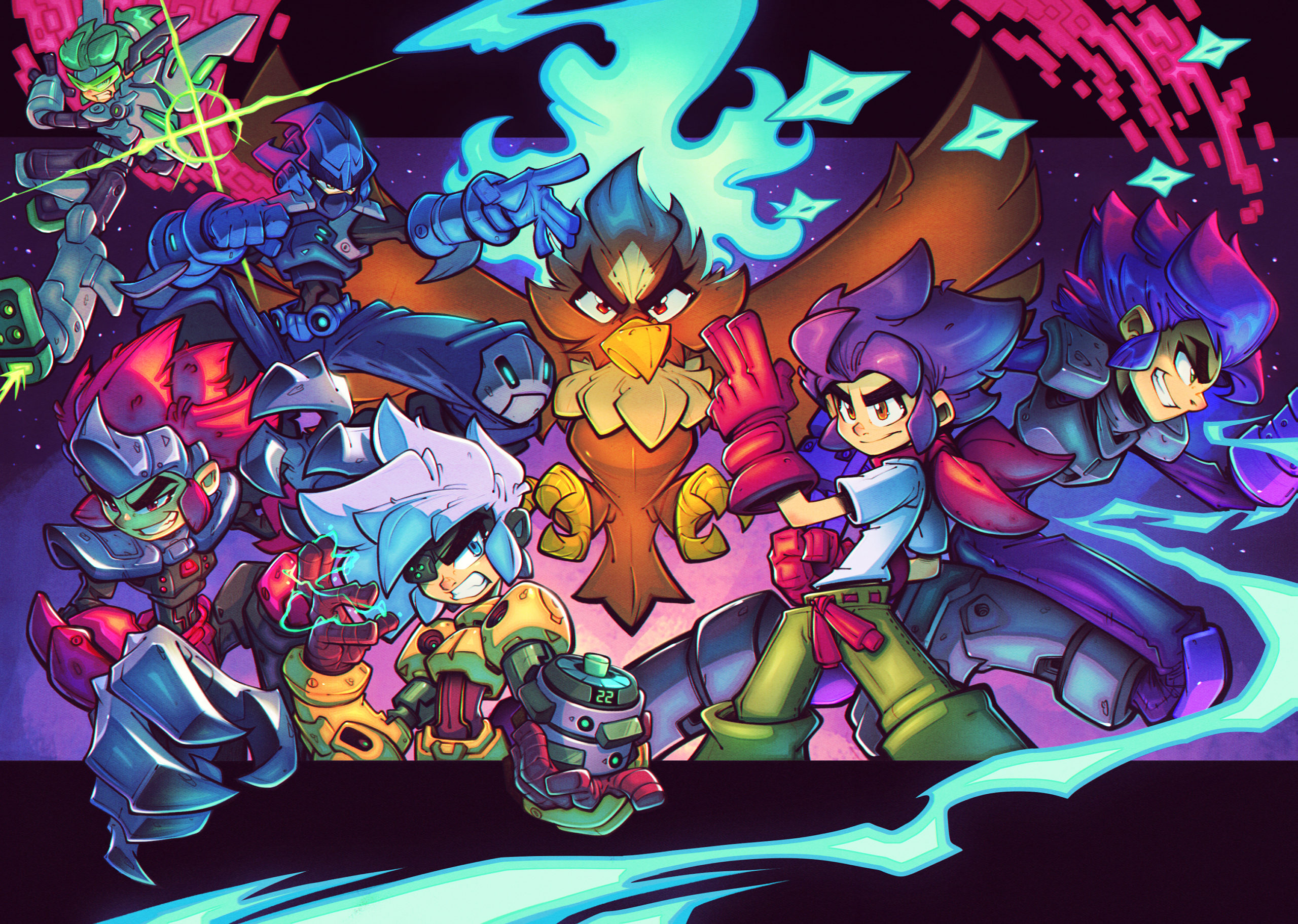
While the environments and animations are well crafted, it’s the cast of characters that undoubtedly steal the show, with the strong anime stylings breathing tremendous life into each and every character you meet. Whether it’s stoic Commander Leslie, the maniacal Dr Genos, or just one of the nameless Resistance refugees, the look and style of each character really helps bring the world to life. Kei’s multiple forms have very cool looks too, with the ninja-inspired Ice Kunai and anime pilot themed Soaring Winds coming in at my top spots.
Sadly, I do feel that Berserk Boy starts to lose some momentum as you begin to reach the later stages. Not an especially difficult platformer to begin with, once you collect the Soaring Wind and Mine Buster forms, the challenge level is lessened considerably. Kei is suddenly able to glide through huge areas of platforming by simply steering him with the analogue stick, avoiding pitfalls and dodging enemies with zero ability required. And the battle sections too are reduced to a few seconds of button bashing, since the Mine Buster cannon lays waste to any-and-all comers in just a hit or two. Even the ‘Final Showdown’ level suffers from Kei feeling overpowered, though I was glad that a genuinely enjoyable final boss battle managed to pull the nose up at the crescendo.
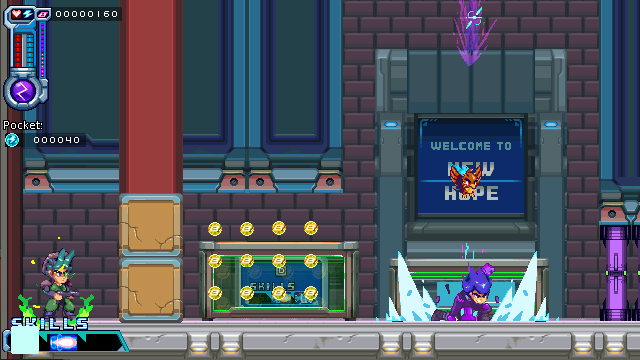
Berserk Boy Games may have shot themselves in the foot by not also introducing some equaliser mechanics to maintain the challenge once you gain these powerful forms. I feel like having sections where you can only use one specific form to get around (and all of the others are locked out) would have a huge positive impact on the engagement, especially in those later worlds. Being able to change Berserk Boy’s abilities at the flick of a switch is a great selling point, but it feels like we might have been given a little too much of a good thing.
One thing that you can’t get too much of though, is the absolutely stellar soundtrack by Sonic Mania maestro, Tee Lopes. The music is perfectly in keeping with the aesthetic, made with equal portions of electro-beats and shredding guitars that push you on at breakneck speed. All of the tracks are catchy and well put together, but I think the boss theme has to be my favourite – it’s an awesome, high octane track that builds with frantic energy as you dash around, avoiding crazy attacks and pummelling your opponent.
In summary, Berserk Boy is a beautiful homage to the 2D games of yesteryear, offering lightning-paced platforming that’s an absolute blast. With stunning environments and wonderful, anime-inspired pixel art characters, the visuals are to die for – as is the top-tier, turbo shredding soundtrack. A lean towards being slightly too easy, along with some level design oversights late-game keep it from being a classic, but Berserk Boy certainly offers a fun experience. I hope this is just the inaugural entry in a great new series of 2D platformers – it certainly has the potential.
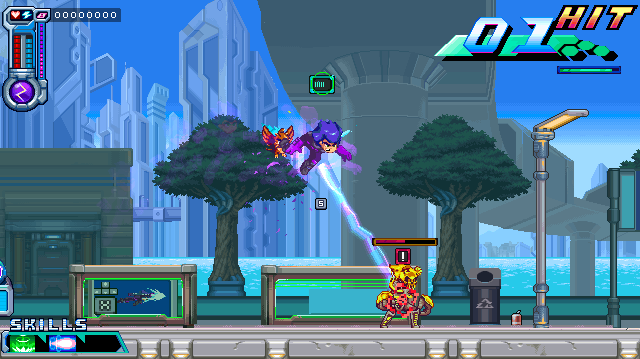
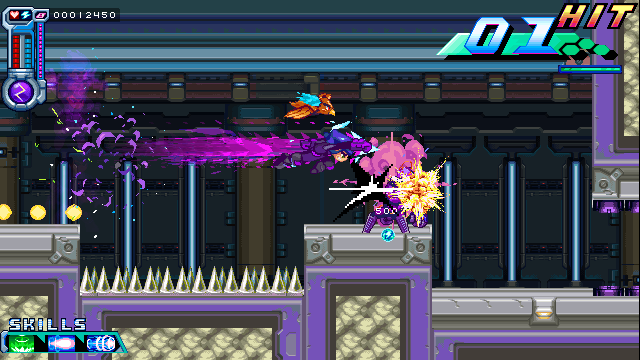
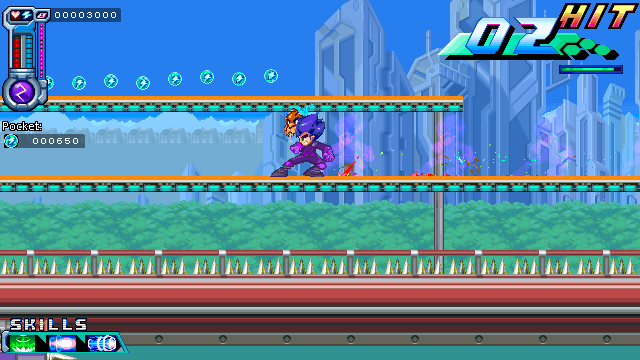
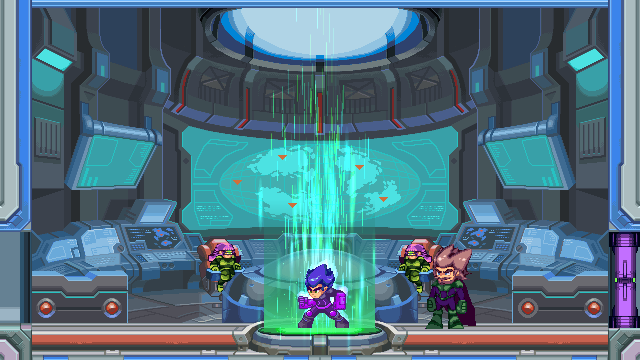


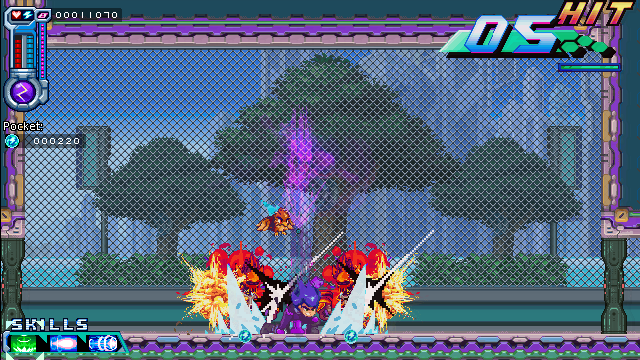
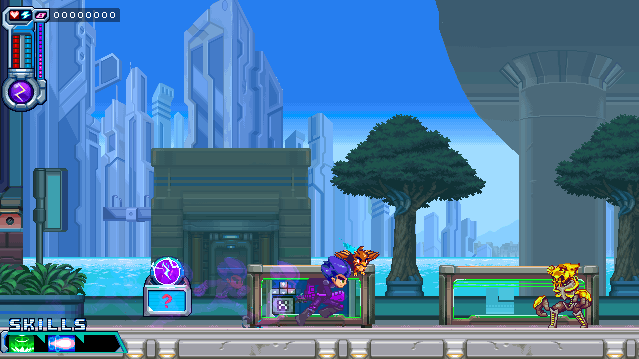
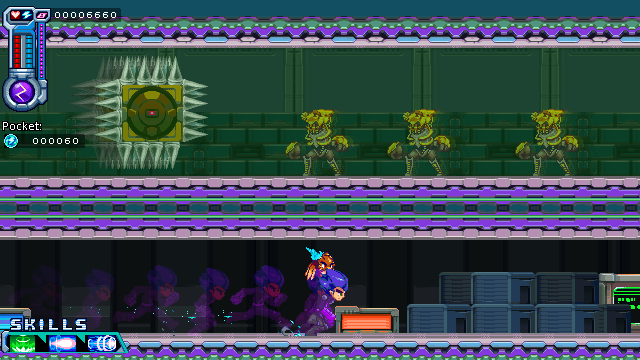
In the interest of full disclosure, VGamingNews was provided with a copy of the game in order to conduct this review.
Thanks for taking the time to read our review. If you’d like to support us further, please consider buying us a coffee!
Sonic Generations 3DS

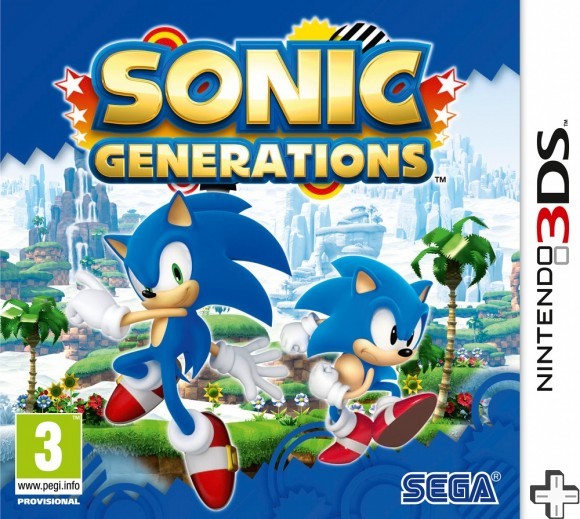
The little blue hedgehog has been with us for the last 20 years and it is fair to say he’s had some ups and some downs. So when SEGA told us that they were producing an almost “best of Sonic” game, the world took notice. Details quickly emerged that this was a marriage of the old school two dimensional Mega Drive Sonic with three dimension Sonic from the noughties and when Sonic Generations was released on the home consoles it proved that the combination of two Sonics could work in almost perfect harmony.
SEGA decided to bring the game to Nintendo’s newest three dimensional console to give gamers who enjoyed the console version to take the two Sonics on the road and from a first glance everything seems eerily similar. Sonic Generations for the 3DS starts off like it’s bigger console counterpart – the Blue Hedgehog’s having a surprise birthday when a mysterious demon shows up and pulls the entire party into a white void. Even the first act of the game is the classic Green Hill Zone complete with retro music and its nostalgic throw back look.
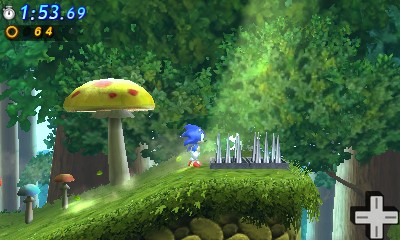
From there however the differences between the home and portable versions appear in droves. There are seven acts, cut from nine. Each has two acts and a special stage to run though. Each stage gives both Sonic’s a chance at playing through it. Young Sonic as he shall hence be known, looks as cute as ever and can perform the spindash, a staple attack from Sonic 2. Granddad Sonic has the typical homing attack and boost moves, enabling him to “grind” on rails.
Blasting through the levels are as easy as ever and will provide little in way of a challenge for anyone who is able to press right and the jump button at the appropriate time. Which is such a shame when it is compared with the levels from the PlayStation & Xbox variations of the game. While the game itself looks great in 3D – especially Mushroom Hill Zone – the game can still be finished in around 4 hours if that.
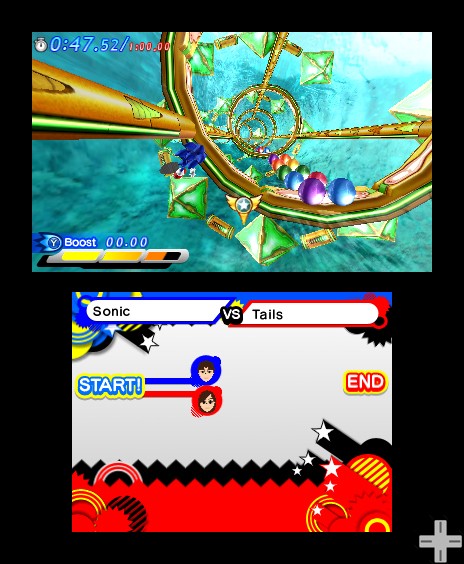
However, such a down point in Sonic Generations, although a big one, is redeemed in how hard it is to actually earn top marks in the Acts. Unlike the PS3/360 versions, where you can still gain an S rank even if you stop half way through a level, have a cup of tea, and have a bath then return to complete the act, on the 3DS effort and skill is required. Which seems pointless considering there are no trophies to be earned from doing so.
There are missions to be unlocked, which sort of replace the trophy aspect and give the game legs, so to speak. 100 missions await, that have varying levels of difficulty and annoyance. One challenge could be so easy it takes three and a half seconds to complete and another take multiple restarts and potentially a new handheld as the temptation to throw the console at a large hard object becomes uncontrollable. Some of these missions will be unlocked naturally as the game progresses with the rest being made up from StreetPassing other Sonic Generations players or using Game Coins.
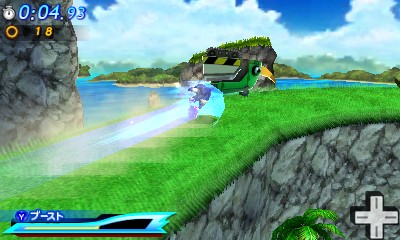
If running missions and trying to get S rankings on all the Acts has you yawning in the face of the fastest blue hedgehog in the world, then SEGA have you catered for too! Online leaderboards challenge every player on every act to either clear it as fast as possible or with the highest score. As well as this, there is a huge amount of extras to unlock, in fact it has just as much than the home console variants.
SEGA has stripped other areas back, replacing the fully animated story down into a manageable cartoon pop up book style animation and toned way down even more on the use of Sonic’s so called friends – in fact only the trusted Tails the two tailed fox, well four tailed foxes in this outing is a serious secondary character in this game. Others just fall by the way side as they are not needed in any way what so ever.
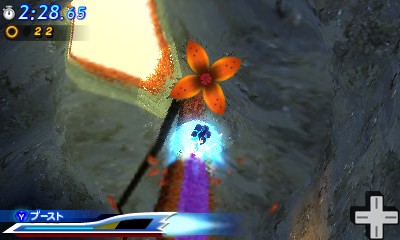
The overall package of Sonic Generations may be condensed to the size of a Nintendo 3DS cartridge, but for all the cut backs in main levels and trophies, SEGA have provided a neat little game that does the legacy of Sonic justice. Yes it’s a little short on the main story mode, but the missions more than make up for this. This is a different experience than the bigger daddy version on the TV screen.
What SEGA did well with the PS3 and Xbox versions in terms of gameplay mechanics is still present. What was created story wise is still the same. But yet, this version of Sonic Generations is more aimed at short bursts of play. Encouraging you to play it on the way to work or school, have it with you for the day and pick up those extra missions when you get home in the evening. It is a far more social game than its bigger brother, and this time you have to actually work hard at the game to finish it and unlock everything.
Sonic Generations

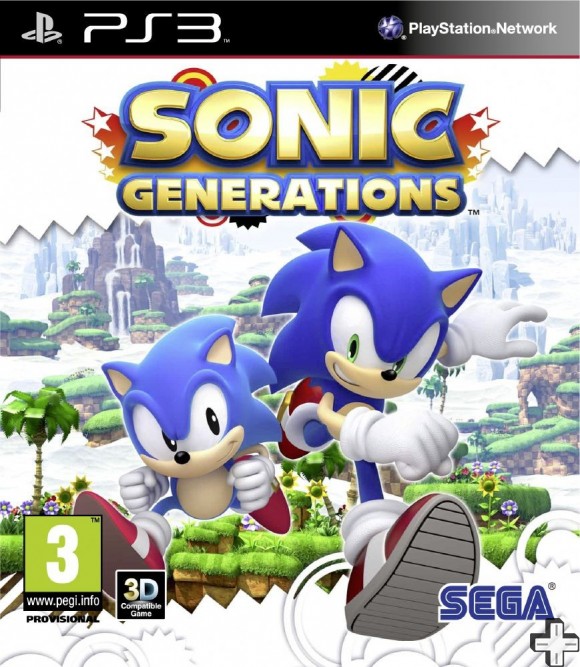
Anyone who has lived for more than 20 years will already have learned right from wrong, good from bad and Up, Down, Left, Right ABC Start brings up the level select. That’s right Sonic The Hedgehog has turned 20, and what better way to say happy birthday than it’s loving mother – Sonic Team & SEGA as the caring father producing Sonic Generations. A game showcasing Sonic’s happiest memories from the last 20 years and unlike the 15th birthday game, Sonic Team and SEGA mean business.
From the get-go, there is no opening cutscene or introduction. As soon as the start button is pushed over the new game option, Sonic starts. Green Hill Zone Act 1. Stunning visuals and that classic Green Hill Zone theme hit right between the eyes, and after a few milliseconds recovery it is time to finally press right and start enjoying what is in effect Sonic’s greatest hits. Except it is unfair to call Sonic Generations just a greatest hits. It is so much more than that. It is an evolution of the hedgehog over 20 years and in future years to come.
Sonic has always been about speed, speed and more speed. It is something that SEGA have lost focus with until recently. Sonic Adventure was more about exploring, Sonic The Hedgehog (2006) was more of a loading screen and I will not even go into Sonic And The Dark Knight. Sonic 4 Episode 1 was a “return to form” of sorts, however top speed took an age to reach and was often interrupted. Sonic Generations does not suffer any of these drawbacks. Sonic speed is reached quickly and isn’t disturbed very often. While there are times when Sonic will be going at a snails pace, they are thankfully infrequent and more reserved for the challenge levels.
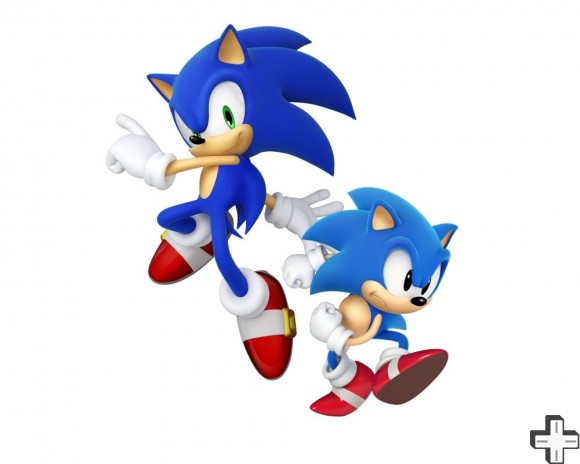
The levels are set out in the familiar two acts per zone format, Classic Sonic will handle Act 1 while Modern Sonic takes Act 2. It isn’t very accurate to say Act 1 is the 2D level and Act 2 is 3D because what SEGA have mixed them both together. Classic Sonic for instance will be running from left to right but occasionally will have to jump into the foreground or fall into the background to make progress.
SEGA’s biggest overhaul in the game has to be the modern twists. For one reason or another, Sonic has never really embraced the change from two dimensions. Next generation efforts have been clunky, slow and as buggy as a motel bed in New York. Falling through the levels and hitting invisible walls the most common complaints. Sonic Generations is again different. Playing through the City Escape level is finally a joyful experience, what it should have been when Sonic Adventure 2 was released on the Dreamcast all those years ago. Sonic does still get stuck occasionally but this minor gripe is nothing compared to the years of frustration endured by previous efforts.
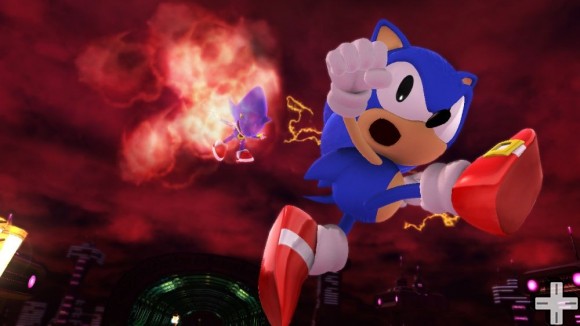
Frustration is felt in other ways. As well as the standard levels with Sonic Generations, there are also challenge levels. These need to be played through in order for new levels and bosses to be opened up. They vary from racing against a ghost version of yourself to battling enemies who have been upgraded. As all the levels in the game are ranked, the word challenge isn’t to be taken lightly. Trying to get top marks in some of the later levels will result in blisters on thumbs.
One thing that will let players down is the lack of special stages. Instead, chaos emeralds are awarded by searching out a Sonic clone (Metal Sonic, Shadow or Silver) or defeating a monster boss. For those who can count, that does mean there are only four bosses in the game and not one after every act like in the good ol’ Mega Drive days. However this does not mean Sonic Generations is by far a small game, not by a long way.
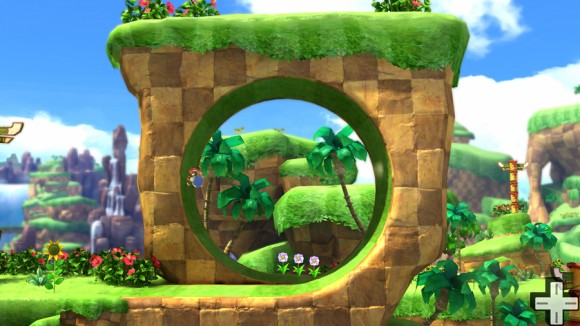
Sonic has a lot to collect from art work to music tracks to skills which can be used for things such as stopping on a pin head to even buying the original Sonic The Hedgehog. There are 120 plus levels in Sonic Generations and each one has at least one item to be collected from it so there is a lot to keep going with. On top of that is the inclusion of online time trails in which users from all around the world compete on leader boards to complete levels in the fastest possible times.It is a limited service, no ghost data can be shared but it is a good way of seeing who is the fastest hedgehog in the world!
While exploring and trying to collect everything right down to a Mega Drive controller, we are treated to remixes of classic Sonic melodies and even the odd foot tapping ditty of a new tune. For the most part it sounds great, there is only two or three songs which don’t match the level they are applied to. Sonic also has his friends visiting which normally would send people running for the earplugs, but after a substitution of voice actors they are considerably less suicide inducing than before.
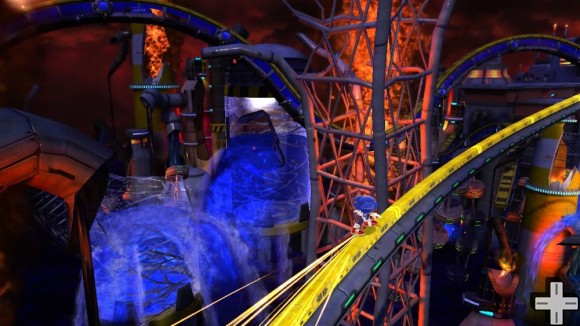
Sonic Generations proves that even after 20 years the blue mascot that once saved SEGA is still relevant and should not be subject to games that have been produced in the last few years. Sonic 4 Episode 1 and Sonic Colours have proved to fans that the Sonic team can make a good Sonic game. Generations is on an entirely different level. Fans of the Sonic series shouldn’t buy this because it’s a best of Sonic through the ages. Fans should buy this as it is a truly great Sonic game. There are a few set backs here and there but they are so few and far between.
There are a number of improvements to the game such as the voice acting actually being tolerable, however the greatest has to be the 3D mechanics of a “modern era” level. Sonic has come along way from Sonic Adventure on the Dreamcast. Sonic Generations is without a doubt the best outing Sonic has had in three dimensions. Possibly ever.
Sonic Generations: Dreamcast Era!
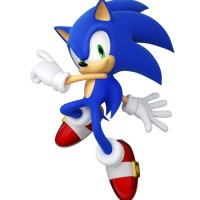
Sonic Generations Update
